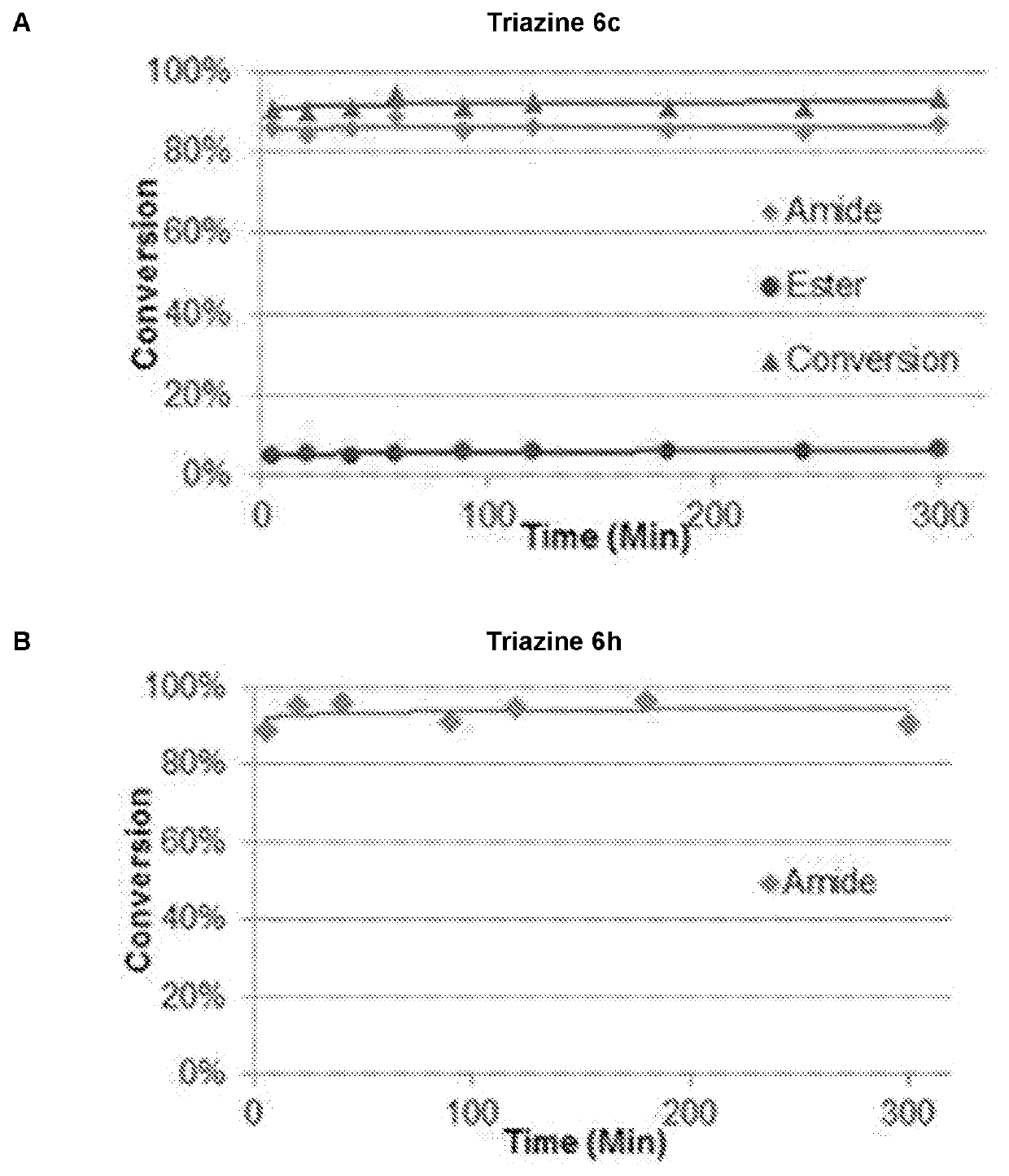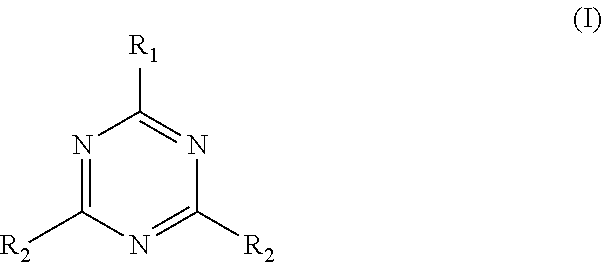Catalysts for chemical reactions in a water-surfactant mixture
a technology of chemical reactions and catalysts, applied in the direction of physical/chemical process catalysts, organic compounds/hydrides/coordination complex catalysts, colloidal chemistry, etc., can solve the problem of dramatic change in mindset, achieve high-promising results, enhance solubilization of reaction partners, and selectivity
- Summary
- Abstract
- Description
- Claims
- Application Information
AI Technical Summary
Benefits of technology
Problems solved by technology
Method used
Image
Examples
examples
[0093]To a mixture of carboxylic acid (1 eq), NaHCO3, (1 eq), and amine (1.1 eq) in TPGS-750-M (2% in water, 10 eq V) was added triazine (1.1 eq) in solution in a water-miscible co-solvent (1 eq V). The reaction was allowed to stir at 25° C. until completion (typically 2 to 5 hours). At completion, the product was either precipitated by the addition of more water, or extracted in isopropyl acetate, and filtered through a short plug of silica to provide the desired amide product.
[0094]A variety of derivatized triazines (6b to 6h) were compared with the reference one (6a) on the following challenging model transformation:
[0095]
[0096]The following triazine derivatives were evaluated, giving the indicated conversion ratio:
[0097]
[0098]The conversions were monitored as a direct indicator of the yield (no competitive side-reaction). This demonstrated that tailoring the reagent for the medium had a profound impact on its outcome.
[0099]Amidation was then performed with different amines and c...
PUM
| Property | Measurement | Unit |
|---|---|---|
| density | aaaaa | aaaaa |
| volume | aaaaa | aaaaa |
| volume | aaaaa | aaaaa |
Abstract
Description
Claims
Application Information
 Login to View More
Login to View More - R&D
- Intellectual Property
- Life Sciences
- Materials
- Tech Scout
- Unparalleled Data Quality
- Higher Quality Content
- 60% Fewer Hallucinations
Browse by: Latest US Patents, China's latest patents, Technical Efficacy Thesaurus, Application Domain, Technology Topic, Popular Technical Reports.
© 2025 PatSnap. All rights reserved.Legal|Privacy policy|Modern Slavery Act Transparency Statement|Sitemap|About US| Contact US: help@patsnap.com



